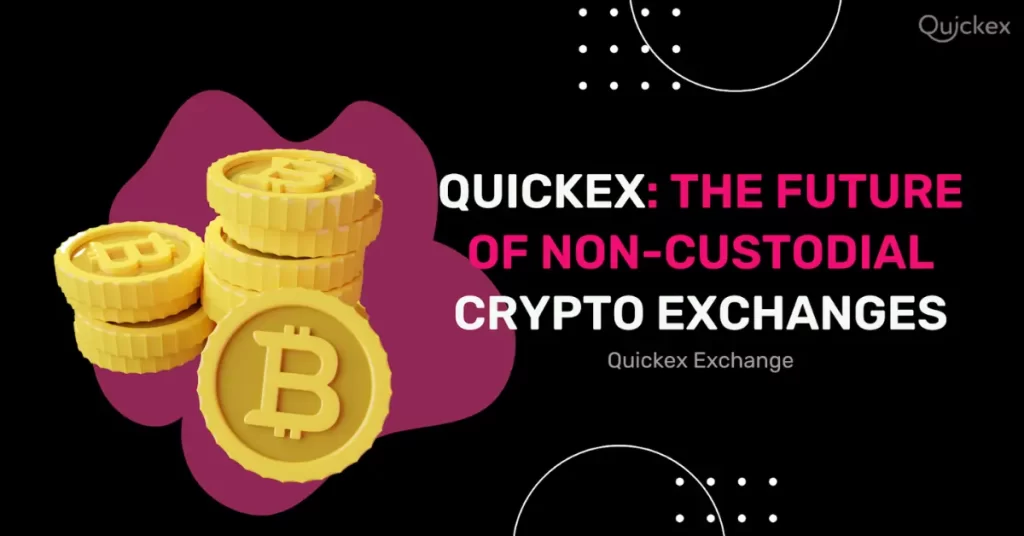Rising Bitcoin Transaction Fees Eclipse Ethereum Before the Halving
Bitcoin holders have set new records for accumulation despite a recent dip in price, while expert analyst Markus Thielen offers a cautious perspective, predicting short-term declines due to a current lack of market catalysts. The implications of these shifts and the approaching Bitcoin halving are also examined as traders and investors navigate an increasingly uncertain economic environment.
Rising Bitcoin Fees Outpace Ethereum Ahead of Halving Event and New Token Standard Introduction
In an unprecedented shift in the cryptocurrency landscape, Bitcoin has eclipsed Ethereum in daily transaction fees for three consecutive days, signaling a heightened phase of activity as the community braces for the upcoming Bitcoin halving and the launch of the Runes token standard on the Bitcoin network.
Between Apr. 15 and Apr. 17, Bitcoin miners collected more in fees than their Ethereum counterparts, marking a rare occurrence in the fee dynamics between the two largest cryptocurrencies by market capitalization. On Apr. 17 alone, Bitcoin miners earned $7.47 million in fees, slightly outpacing the $7.31 million earned by Ethereum stakers, as reported by Crypto Fees. The days prior saw even larger disparities, with Bitcoin fees exceeding Ethereum's by $3.5 million and $1.1 million respectively.
Despite this surge, Ethereum maintains a slight edge in the average fees collected over the past seven days, totaling $8.55 million compared to Bitcoin's $7.57 million. The calculation of Bitcoin transaction fees, which depends on the size of the transaction and the current demand for block space, plays a crucial role in these fluctuations.
Bitcoin Halving Event Signals Major Shift for Miners
This increase in Bitcoin's transaction fees arrives at a critical juncture. The Bitcoin network is approaching a halving event scheduled for Apr. 20, where the reward for mining a block will be halved from 6.25 BTC to 3.125 BTC. This event significantly reduces the income miners can expect from block rewards, making transaction fees a more critical component of their revenue.
Currently, around 900 Bitcoins are mined daily, translating to approximately $57.2 million at current prices. With fees on Apr. 17 making up 11.5% of total mining revenue, the upcoming halving will likely increase the proportion of income that miners derive from transaction fees, particularly as the reward per block drops to about 450 BTC.
Runes and Ordinals Enhance Bitcoin's Fee Market
Adding to the intrigue is the introduction of NFT-like "Ordinals" in January 2023, which has already bolstered fee revenues for Bitcoin miners. The forthcoming release of "Runes," a new token standard expected to coincide with the halving, promises to further enrich the Bitcoin network. Runes aims to facilitate the creation of fungible tokens, appealing to creators of memecoins and other community-driven projects.
Casey Rodarmor, the creator behind both Ordinals and Runes, asserts that Runes are fully UTXO-based and designed to avoid the network spam issues associated with earlier innovations. This new standard is poised not only to diversify Bitcoin’s applications but also to stabilize the fee market.
Market Dynamics Reflect Anticipation and Adjustments
Meanwhile, the recent surge in Bitcoin fees might also be linked to a downturn in the prices of BRC-20 tokens, including Ordinals (ORDI) and Sats (SATS), which have seen significant price declines over the past week. As traders pivot their focus towards the potential of Runes, the shifts in the cryptocurrency market underscore the dynamic and rapidly evolving nature of this digital economy.
With the halving around the corner, both miners and traders are closely watching these developments, which will undoubtedly shape the strategies and economic realities of the cryptocurrency ecosystem in the coming months.
Bitcoin Holders Seize Opportunity as BTC Tumbles Below $63,000, Setting New Accumulation Record
Hardcore Bitcoin holders added a staggering $1.7 billion worth of BTC to their "accumulation" wallet addresses in a single day earlier this week, as Bitcoin's price dipped below $63,000. This move sets a new record for daily accumulation, signaling an enduring bullish sentiment among dedicated cryptocurrency investors.
Record-Breaking Accumulation Amid Price Dip
Between Apr. 16 and 17, over 27,700 BTC, valued at approximately $1.75 billion at current prices, was transferred to accumulation addresses. This new record surpasses the previous high set on Mar. 23, when 25,500 BTC was moved into these wallets as Bitcoin hovered around the $63,500 mark, according to data from CryptoQuant.
Accumulation addresses are defined as Bitcoin wallets that have never shown any outflows and maintain a balance of over 10 BTC. These wallets are carefully vetted to exclude those associated with miners and cryptocurrency exchanges and must have been active at some point within the last seven years.
Strategic Buying Indicates Strong Market Confidence
The concentrated buying activity around the $63,000 price range indicates a strategic response from investors, suggesting a strong belief in Bitcoin's long-term value. Market analysts, including the pseudonymous trader Rekt Capital, have noted that the early months of this year might offer the last opportunity to purchase Bitcoin at what are perceived as bargain prices before a potential surge following the upcoming halving event.
Anticipation of Post-Halving Rally
Rekt Capital, who commands a significant following on social media, noted in an Apr. 17 post that Bitcoin's price action is mimicking patterns observed in previous halving cycles. The trader described the recent dip, which saw Bitcoin fall more than 14% from its all-time high of $73,600 on Mar. 13, as a typical "pre-halving retrace."
Predictions of a Re-Accumulation Phase
Looking ahead, Rekt Capital anticipates that Bitcoin will enter a "re-accumulation phase" after the halving, which is scheduled for Apr. 20. This phase is expected to pave the way for a breakout into a parabolic uptrend. Historically, this phase has lasted just over a year (approximately 385 days), but Rekt suggests that the current market cycle might see this period significantly shortened due to an "Accelerated Cycle."
This strategic accumulation amid price fluctuations highlights the deep-rooted confidence among long-term Bitcoin investors. As the market approaches the halving event, all eyes will be on the potential for significant price movements and the broader implications for the cryptocurrency market.
Investors and analysts alike will be closely monitoring how these developments influence Bitcoin's trajectory in what is increasingly seen as a pivotal year for both Bitcoin and the wider digital asset space.
Bearish Clouds Gather Over Crypto Market, Analyst Warns of Short-Term Declines
Meanwhile, in a sobering assessment of the current cryptocurrency market, well-known research analyst Markus Thielen has forecasted a downward trend for BTC in the short term. Thielen shared his insights on the recent podcast episode, where he expressed skepticism about the immediate future of crypto prices, noting a lack of new catalysts to drive a resurgence.
Lack of Market Drivers
Thielen, known for his accurate predictions of past bull and bear cycles in the crypto world, pointed out that the dynamic forces that previously propelled Bitcoin from $40,000 to $70,000 seem to have dissipated. "We don't have the typical drivers anymore that really brought prices from the $40,000 to the $70,000 region," he commented. Central to his analysis is the performance of spot Bitcoin ETFs, which have not attracted significant inflows in recent weeks. This slowdown suggests that the initial enthusiasm following their January launch has waned significantly, particularly among traditional finance (TradFi) investors. "It seems that a lot of the TradFi investors aren’t biting anymore," Thielen added.
The Macro Environment's Role
Thielen elaborated that the decline in ETF inflows and the broader sell-off in crypto assets are symptomatic of larger macroeconomic issues. He specifically cited the impact of recent economic data, including the consumer and producer price indices released around Mar. 12, which indicated that inflation remains stubbornly high. This situation has led to uncertainty from the Federal Reserve regarding interest rate cuts, which had been anticipated by traders at the start of the year. "I think a lot of the bitcoin rally is maybe built on wrong expectations," Thielen noted, emphasizing the importance of the macroeconomic backdrop over other factors.
Consolidation and Caution Ahead
Looking forward, Thielen predicts a consolidation period that could see Bitcoin’s price dip to around $50,000 before potentially recovering towards the end of the year. He advises caution, particularly with respect to the upcoming Bitcoin halving on Apr. 20th, which many market participants believe will catalyze a significant price rally. Contrary to popular belief, Thielen argued that previous bullish post-halving cycles were more a product of favorable macroeconomic conditions rather than the halving events themselves. The last halving in May 2020, for instance, coincided with massive monetary and fiscal stimuli due to the Covid-19 shutdowns, skewing perceptions of the halving's impact. “I wouldn't give almost any credit to the halving because I don't think the halving is the big driver," he asserted. "It's really the big macro factors.”
Market Implications
Thielen’s analysis presents a cautionary tale for crypto investors, suggesting that the market’s fortunes are more closely tied to global economic conditions than the technological and structural changes within the cryptocurrency space. His commentary highlights the importance of maintaining a keen awareness of broader economic indicators and suggests that investors might need to temper their expectations for crypto’s performance in the short term.
As the market navigates these turbulent waters, Thielen’s insights could serve as a critical guide for investors looking to strategize their positions in an increasingly complex and interconnected financial landscape.





